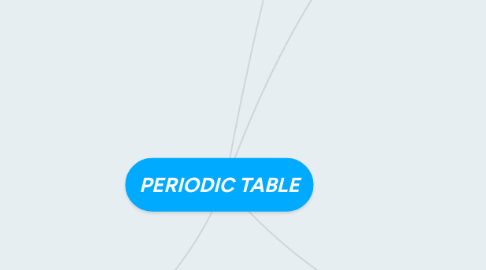
1. the transition metals
1.1. The transition metals are placed in the centre of the periodic table, between groups 2 and 3. They are generally hard and dense, and less reactive than the alkali metals. Iron, copper, silver and gold are important transition metals.
1.2. - but mercury is a liquid at room temperature
1.3. they form coloured compounds
1.4. they are good conductors of heat and electricity
1.5. they are melleable can be hammered or bent into shape easily
1.6. they are usually hard and tough they have high densities
1.7. they have high melting points
1.8. main uses
1.8.1. Iron being used in construction building materials, tools, vehicles, catalyst in manufacture of ammonia
1.8.2. Titanium is used in hip replacements fighter aircraft, artificial hip joints, pipes in nuclear power stations
1.8.3. Copper is used in making water pipes electric cables.
1.8.4. pence coins are made from nickel coins, catalyst in manufacture of margarine
1.8.5. they are less reactive than alkali metals such as sodium
1.9. they are ductile (can be drawn into wires
2. group 1:the alkali metals
2.1. The alkali metals are a group (column) in the periodic table consisting of the chemical elements lithium (Li), sodium (Na), potassium (K), [note 1] rubidium (Rb), caesium (Cs) and francium (Fr).
2.2. like all metals they are good conductors of electricity
2.3. but they are softer than most other metal.they are very soft and can be cut easily with a knife
2.4. they are 'lighter' than most other metals
2.5. they have low densities (lithium, sodium and potassium will float on water)
2.6. they have low melting and boiling point and as you go down get down the metal m.p also decreases
2.7. they react quickly with water, producing hydroxides and hydrogen gas
2.8. main uses
2.8.1. Lithium is used in lubricants, in batteries, in glass industries, and in alloys of lead, aluminum, and magnesium to make them less dense and stronger.
2.8.2. Sodium nitrite is a principle ingredient in gunpowder.
2.8.3. Sodium nitrite is a principle ingredient in gunpowder.
2.8.4. Most of the Potassium is used in making the fertilizer.
2.8.5. Rubidium is used almost exclusively for research, but cesium is used in special glasses and radiation detection equipment.
3. group 7:the halogens
3.1. halogens. Group 17 (or VII) in the periodic table consisting of fluorine (F), chlorine (Cl), bromine (Br), iodine (I), and astatine (At). They share similar chemical properties. electronegativity. The tendency of an atom to attract electrons to itself.
3.2. they are non-metals
3.3. they have low melting and boiling points
3.4. they are brittle when solid their molecules each contain two atoms (they are diatomic)
3.5. they are poor conductors of heat and electricity.they have colored vapours.
3.6. their molecules each contain two atoms (they are diatomic)
3.7. main uses
3.7.1. Halogens are bleaching agents. They will remove the colour of dyes. Chlorine is used to bleach wood pulp to make white paper.
3.7.2. Halogens kill bacteria. Chlorine is added to drinking water at very low concentrations. This kills any harmful bacteria in the water, making it safe to drink. Chlorine is also added to the water in swimming pools.
3.8. Because the halogens are very reactive and poisonous, care must be taken when using them. Iodine should not be handled (it will damage the skin). Gloves may be used, and goggles should be worn.
4. group 8:the noble gases
4.1. The elements in group 0 are called the noble gases. They belong to the right-hand column in the periodic table. The noble gases are all chemically unreactive which means they are inert
4.2. they are non-metals
4.3. they are very unreactive gases
4.4. they are colourless
4.5. they exist as single atoms (they are monatomic)
4.6. main uses
4.6.1. HELIUM:Used in balloons and airships. It is much less dense than air, so balloons filled with it float upwards.
4.6.2. ARGON:Used in light bulbs. The very thin metal filament inside the bulb would react with oxygen and burn away if the bulb were filled with air instead of argon. As argon is unreactive, it stops the filament burning away.
